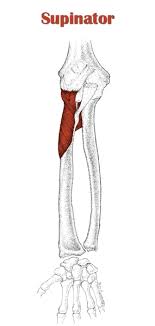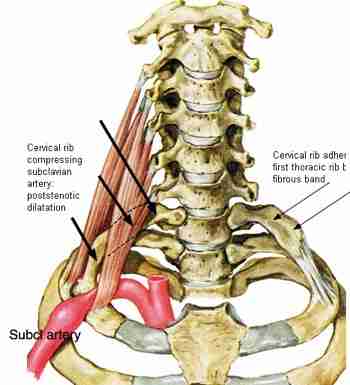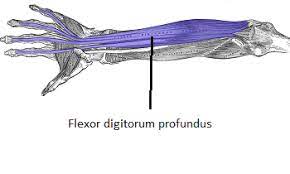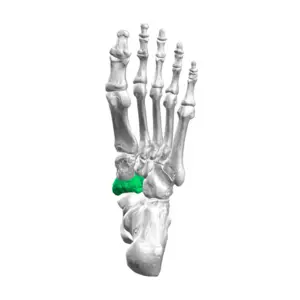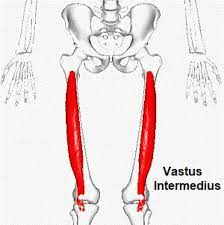Elbow Muscles
Table of Contents
Introduction
The elbow muscles are a group of muscles responsible for the movement and stability of the elbow joint. Key muscles include the biceps brachii, triceps brachii, and brachialis. These muscles work together to flex and extend the elbow, allowing for various activities such as lifting, throwing, and pushing. Understanding the elbow muscles is crucial for maintaining proper function and preventing injuries.
The elbow joint is surrounded by a complex network of muscles that work together to facilitate the movement of the forearm and hand. The flexors are responsible for bending the elbow joint, the extensors are responsible for extending the elbow joint, and the pronators or supinators are responsible for rotating the forearm.
The elbow is a complex joint that is responsible for the movement of the forearm and hand. The muscles that surround the elbow joint are responsible for the movement of the joint, and they can be divided into three groups based on their function: flexors, extensors, and pronators or supinators
List of Elbow Muscles
- Pronator Teres
- Triceps Brachii
- Brachioradialis
- Brachialis
- Biceps brachii
- Anconeus
- Supinator
- Pronator quadratus
Elbow muscles Anatomy
Pronator Teres
It works the toughest during the elbow flexion the hand simultaneously does the pronation.
Origin: This muscle arises from the Medial supracondylar ridge of the humerus & medial side of the coronoid process of the ulna bone.
Insertion: This muscle is inserted at the Middle 1/3 of the outer surface of the radius bone.
Actions: It helps in Pronation and Elbow flexion
Innervation: Median nerve
Daily uses: This muscle is useful in turning a screwdriver
Triceps Brachii
This muscle assists Latissimus Dorsi in the extension of the shoulder joint. It contracts strongly during the upward phase of a push-up, to straighten the arm.
Origin: The Long head arises from the lower part of the glenoid cavity of the scapula. The lateral head arises from the Upper half of the posterior surface of the humerus. The medial head arises from the Lower 2/3 of the posterior surface of the humerus
Insertion: This muscle is inserted into the olecranon process of the ulna
Actions: This muscle helps in Elbow extension
Innervation: Radial nerve
Daily uses: It is useful in Pushing a door closed
Brachioradialis
This muscle acts as the supinator of the forearm from a pronated position during flexion of the elbow. When we start in a supinated position, it acts as a pronator of the hand as it does the flexion of the elbow.
Origin: This muscle arises from the Lower 2/3 of the lateral supracondylar ridge of the humerus.
Insertion: This muscle is inserted into the Styloid process of the radius bone.
Actions: It helps in Elbow flexion, Pronation, and Supination
Innervation: Radial nerve.
Daily uses: This muscle is useful for turning a corkscrew.
Brachialis
This muscle acts as flexion of the elbow whether in pronation or supination, along with Biceps Brachii. As this muscle is connected to the Ulna, which cannot do the rotation, this is the one and only real elbow flexor.
Origin: Lower half of the anterior humerus.
Insertion: Coronoid process of the ulna.
Actions: Elbow flexion.
Innervation: Musculocutaneous nerve.
Daily uses: Picking up shopping bags.
Biceps brachii
This muscle crosses two joints the elbow and shoulder joints. This muscle act on the shoulder joint as a very weak flexor muscle. It works most effectively in flexion of the elbow joint while the forearm is supination (palm facing up). The bicep curl is a very commonly used exercise for strengthening this muscle.
Origin: The Long head arises from the top of the glenoid fossa. And the Short head originated from the coracoid process.
Insertion: This muscle is inserted at the Bicipital tuberosity of the radius. Also the Bicipital aponeurosis into the deep fascia of the forearm.
Actions: This muscle act for Elbow flexion, Supination of the forearm.
Innervation: Musculocutaneous nerve.
Daily uses: This muscle is used for taking up a shopping bag.
Anconeus
It is one of the very small elbow muscles. It works with Triceps Brachii in elbow extension. This muscle also acts to tug the synovial membrane out of the way of the olecranon process during the elbow extension.
Origin: This muscle arises from the Posterior surface of the lateral condyle of the humerus.
Insertion: This muscle is inserted at the Posterior surface of the upper ulna and its olecranon process.
Actions: This muscle act as an Elbow extensor.
Innervation: Radial nerve.
Daily uses: This muscle is used for Pushing a door closed.
Supinator
This muscle is an elbow joint muscle that works majorly when your arm is straight and you are trying to turn your forearm outwards side.
Origin: This muscle arises from the Lateral epicondyle of the humerus and the posterior side of the ulna.
Insertion: This muscle is inserted at the Lateral surface of the radius.
Actions: This muscle act as the Supinatior of the forearm.
Innervation: Radial nerve (C6).
Daily uses: This muscle is used for removing a screwdriver.
Pronator quadratus
This muscle pronates the forearm and helps the triceps muscle for extension of the elbow.
Origin: This muscle arises from the Distal quarter of the anterior aspect of the ulna.
Insertion: This muscle is inserted at the Distal quarter of the anterior aspect of the radius.
Actions: This muscle act as the Pronation of the forearm
Innervation: Median nerve
Daily uses: This muscle is used for Screwing in a screw with the use of a screwdriver
Strengthening of elbow muscle
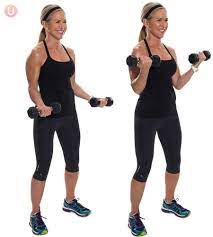
Strengthening the elbow muscles is important for maintaining proper arm function and preventing injuries. The elbow joint is created with 3 bones which are: the humerus, the ulna, and the radius. The muscles that control the elbow joint are the biceps, triceps, brachialis, and brachioradialis. Following are exercises that can improve the strength of Elbow muscles:
- Bicep curls: Take a dumbbell in each hand with your palms facing up. place your elbows near your body and take the weights up towards your shoulders. Lower the weights back down slowly and repeat for several sets.
- Tricep extensions: Take a dumbbell in both hands and lift it over your head. Bend your elbows so that the weight goes at the back of your head. Straighten your arms to lift the weight back up and repeat for several sets.
- Hammer curls: take a dumbbell in each hand just like your palms facing each other. Keep your elbows close to your torso as you curl the weights up toward your shoulders. Lower the weights back down slowly and repeat for several sets.
- Reverse curls: Hold a dumbbell in each hand with your palms facing down. Keep your elbows close to your torso as you curl the weights up toward your shoulders. Lower the weights back down slowly and repeat for several sets.
- Tricep dips: Sit on the edge of a bench or chair with your hands on the edge behind you. Lower yourself down by bending your elbows and then push yourself back up to the starting position.
- Push-ups: Initiate in a plank position with your hands shoulder-width away. Lower yourself down by bending your elbows and then push yourself back up to the starting position.
- Pull-ups: hold a pull-up bar with your palms facing apart from you. Pull yourself up until your chin is above the bar and then lower yourself back down slowly.
In addition to these exercises, it is important to stretch your elbow muscles before and after your workout. This will help to reduce any risk of injuries and increase your range of motion. You can also use resistance bands or weights to add more resistance to your exercises as you progress. keep in mind to initiate with lighter weights and slowly raises the weight as you become stronger.
Stretching of elbow muscle
Stretching the elbow muscles is an important part of any exercise routine. It helps to prevent injury and improve flexibility and range of motion in the joint. Here are some stretches that can be done to target the elbow muscles:

- Tricep stretch: Stand with your feet shoulder-width apart and raise one arm above your head. Bend your elbow so that your hand gets to the back side of your head. Use your other hand to gently pull your elbow towards your head until you feel a stretch in your tricep muscle. maintain for 15-30 seconds and do it again on the other side.
- Bicep stretch: Stand with your feet shoulder-width apart and raise one arm straight out in front of you. Rotate your palm to face up and use your other hand to gently pull your fingers towards your wrist until you feel a stretch in your bicep muscle. maintain for 15-30 seconds and do it again on the other side.
- Wrist flexor stretch: Stand with your feet shoulder-width apart and extend one arm out in front of you with your palm facing down. Use your other hand to gently pull your fingers back towards your wrist until you feel a stretch in your wrist flexor muscle. maintain for 15-30 seconds and do it again on the other side.
- Wrist extensor stretch: Stand with your feet shoulder-width apart and extend one arm out in front of you with your palm facing up. Use your other hand to gently push your fingers down towards your wrist until you feel a stretch in your wrist extensor muscle. maintain for 15-30 seconds and do it again on the other side.
- Forearm stretch: Stand with your feet shoulder-width apart and extend one arm out in front of you with your palm facing down. Use your other hand to gently push down on the back of your hand until you feel a stretch in your forearm muscles. maintain for 15-30 seconds and do it again on the other side.
It is important to hold each stretch for at least 15-30 seconds and repeat on both sides. Do not force the stretch beyond your comfort level and stop if you feel any pain. Stretching should be done before and after exercise to prevent injury and improve flexibility.
FAQ
The main muscles in the elbow include the biceps, triceps, wrist flexors, and wrist extensors.
You can strengthen your elbow muscles by performing exercises such as bicep curls, tricep dips, wrist curls, and forearm curls.
Stretching the elbow muscles helps to prevent injury and improve flexibility and range of motion in the joint.
Each stretch should be held for at least 15-30 seconds.
Stretching should be done before and after exercise to prevent injury and improve flexibility.
If you feel pain during a stretch, stop immediately and do not force the stretch beyond your comfort level.


